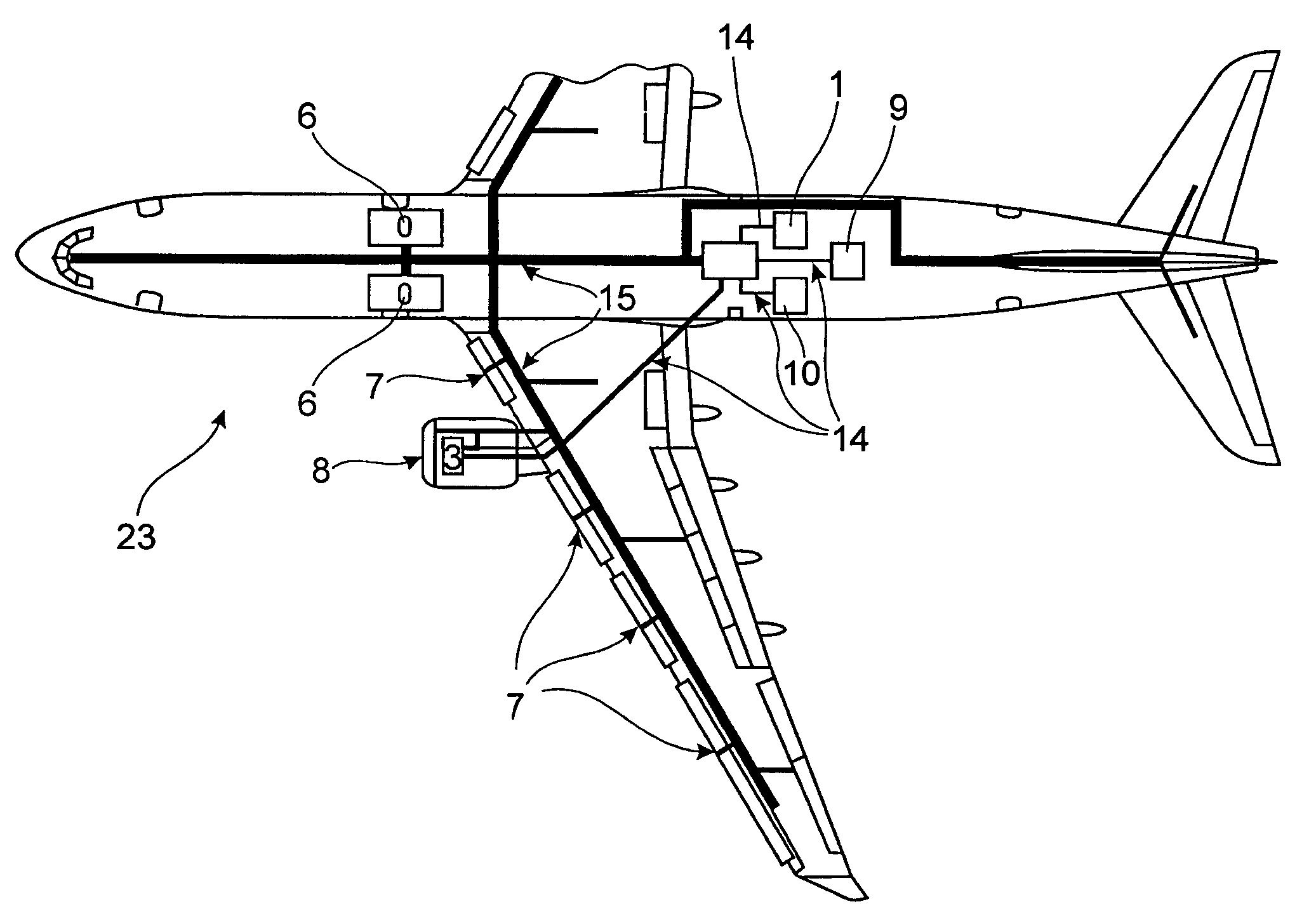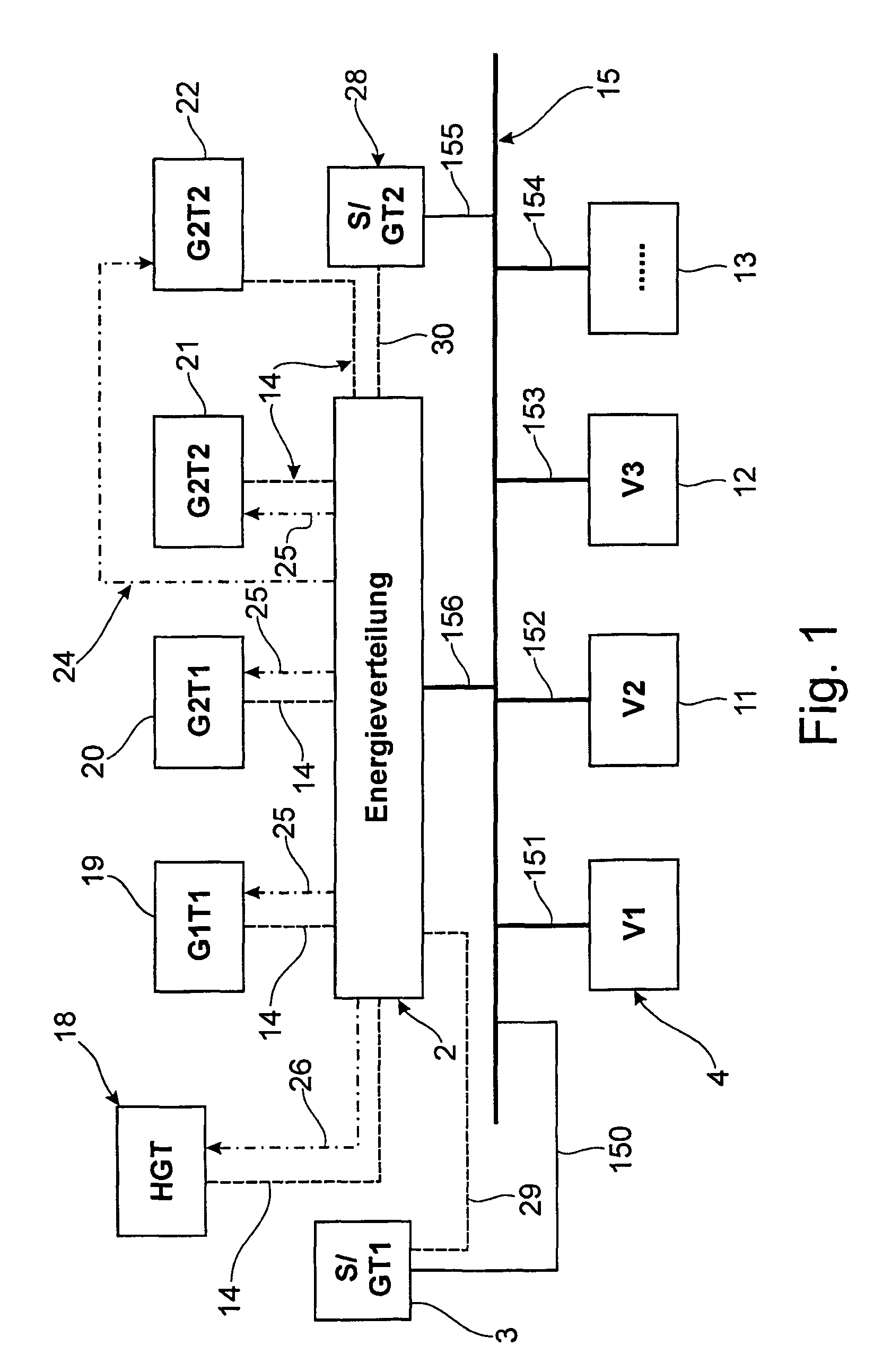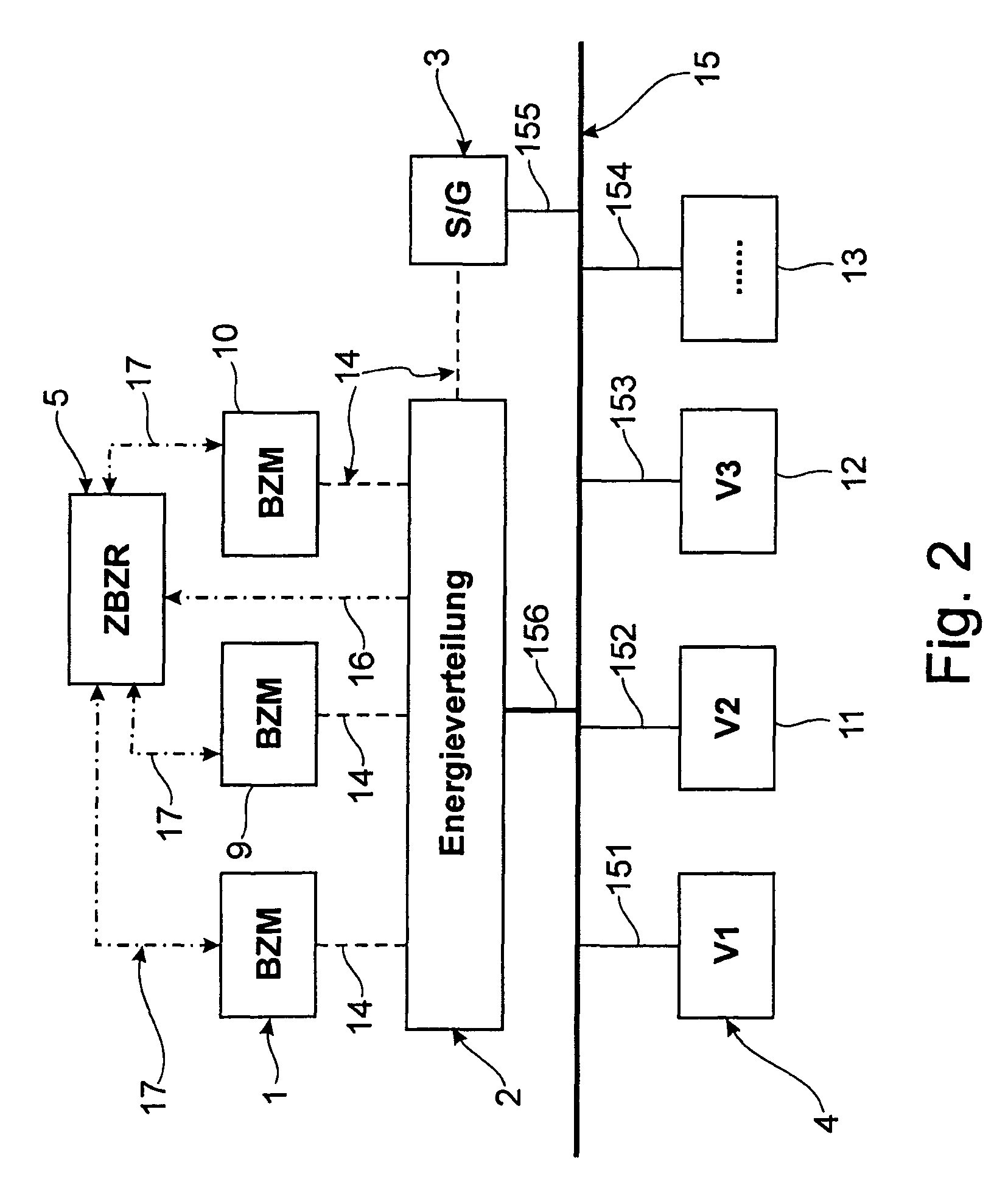Fuel cell system as a primary electrical energy supply for aircraft
a fuel cell and aircraft technology, applied in the direction of energy-efficient board measures, electrochemical generators, efficient propulsion technologies, etc., can solve the problems of low efficiency of cabin air conditioning systems, bleed air systems require considerable construction expenditure, and inability to operate with bleed air, so as to reduce in-flight fuel consumption, improve the efficiency of onboard energy generation, and reduce pollutant emissions
- Summary
- Abstract
- Description
- Claims
- Application Information
AI Technical Summary
Benefits of technology
Problems solved by technology
Method used
Image
Examples
Embodiment Construction
[0027]FIG. 1 shows a diagrammatic view of an electrical energy supply system for aircraft with generators which are driven by the engines. In this arrangement the energy supply substantially comprises an electrical onboard supply system 15, an energy distribution device 2 and electrical generators of the electrical generators 19 to 22 of the engine. In this arrangement the electrical generators 19 to 22 are driven by way of the engine and generate electrical energy which they supply to the energy distribution device 2 by way of the supply lines 14. The engine generators 19 and 20 are the first and the second engine generator of the first engine. The engine generators 21, 22 are the first and the second generator of the second engine (the engines are not shown in FIG. 1). Furthermore, an auxiliary power unit 18 is connected to the energy distribution device 2 by way of the supply line 14. The four engine generators 19 to 22 and the auxiliary power unit 18 are connected to the energy ...
PUM
| Property | Measurement | Unit |
|---|---|---|
| electrical energy | aaaaa | aaaaa |
| electrical | aaaaa | aaaaa |
| energy | aaaaa | aaaaa |
Abstract
Description
Claims
Application Information
 Login to View More
Login to View More - R&D
- Intellectual Property
- Life Sciences
- Materials
- Tech Scout
- Unparalleled Data Quality
- Higher Quality Content
- 60% Fewer Hallucinations
Browse by: Latest US Patents, China's latest patents, Technical Efficacy Thesaurus, Application Domain, Technology Topic, Popular Technical Reports.
© 2025 PatSnap. All rights reserved.Legal|Privacy policy|Modern Slavery Act Transparency Statement|Sitemap|About US| Contact US: help@patsnap.com



